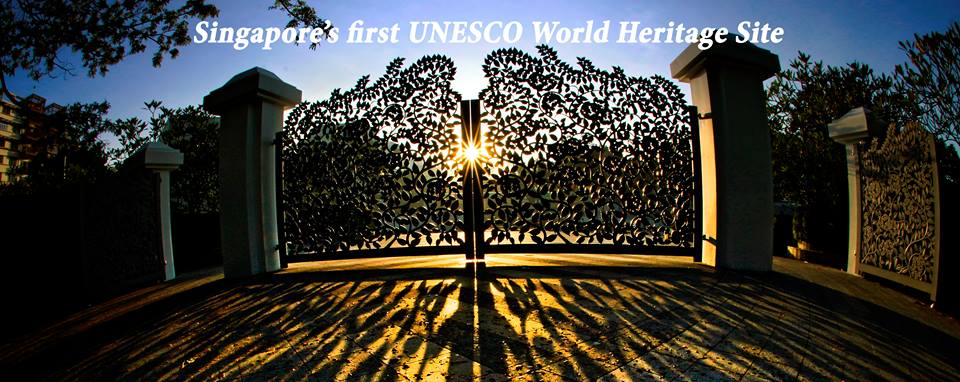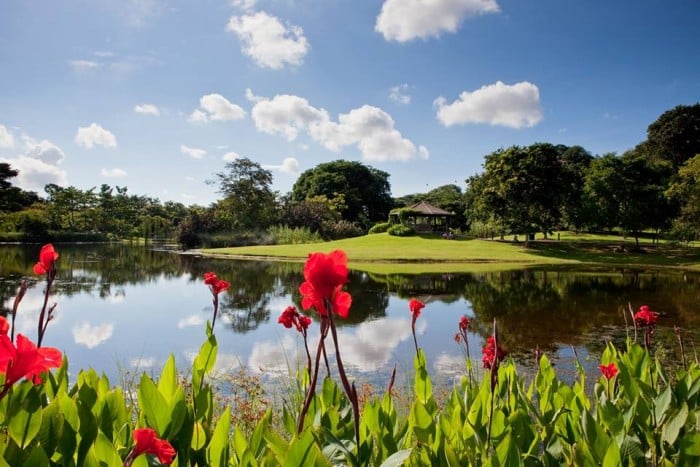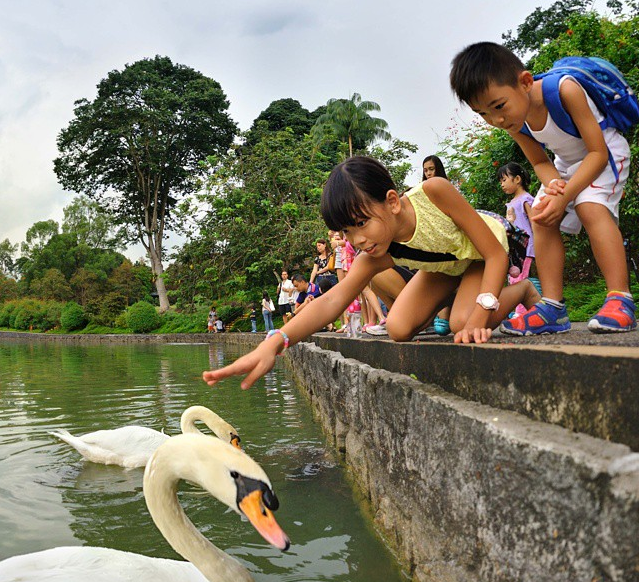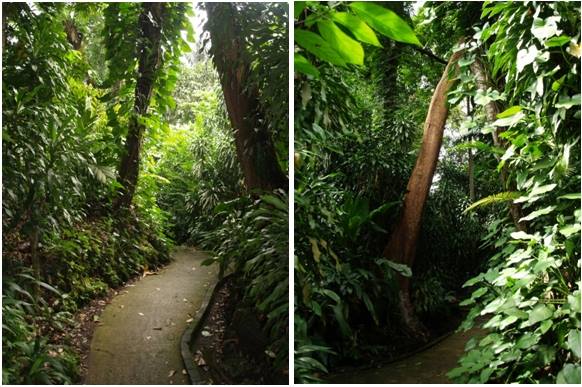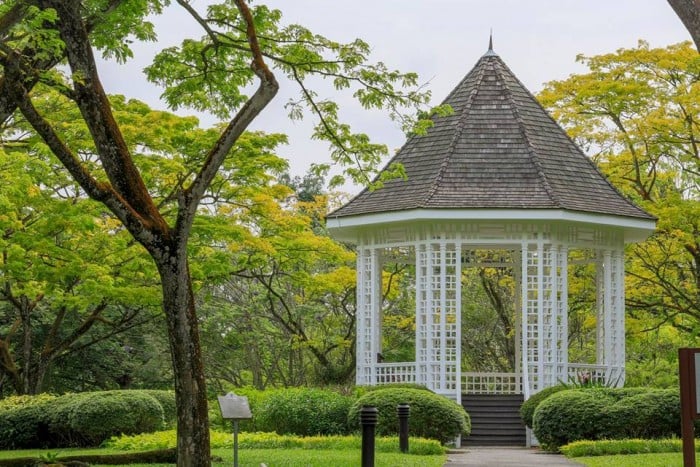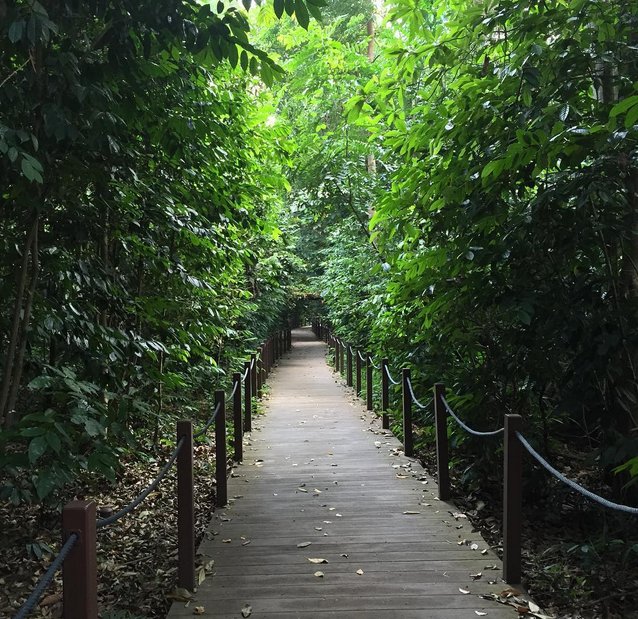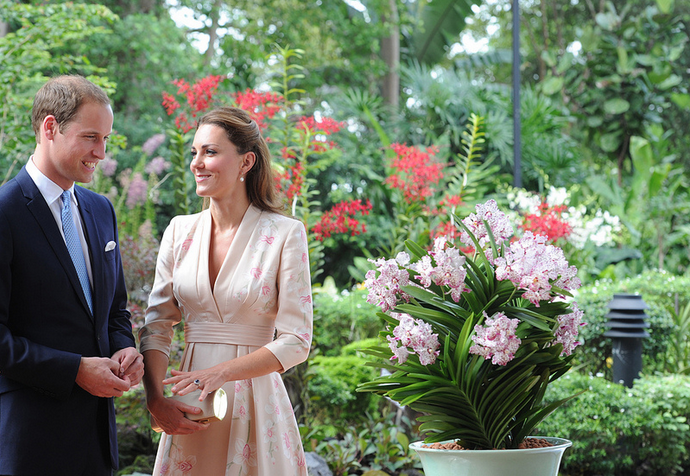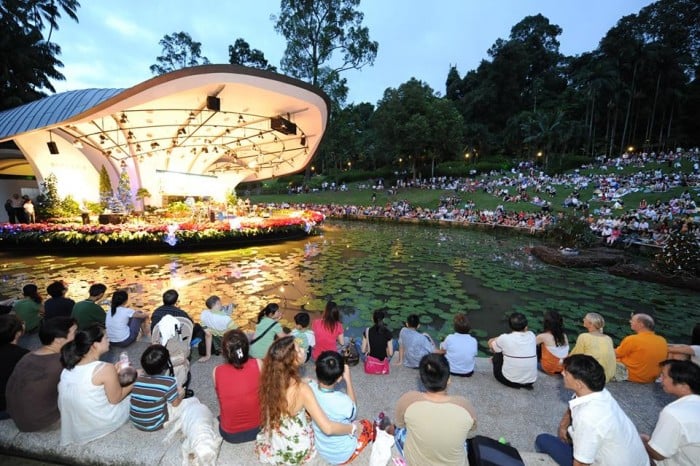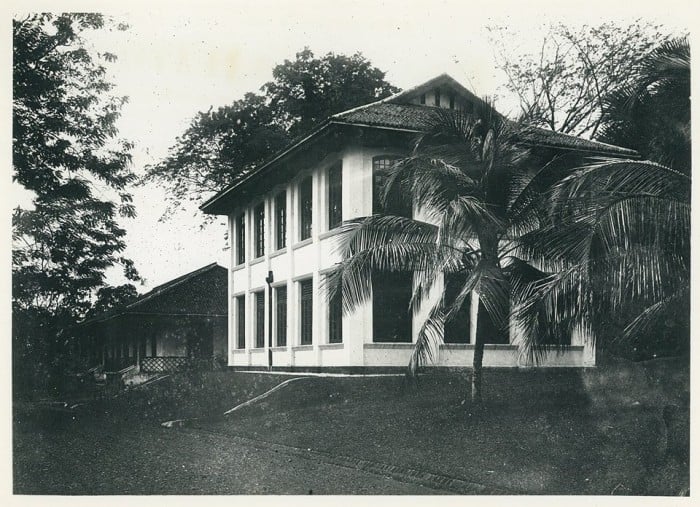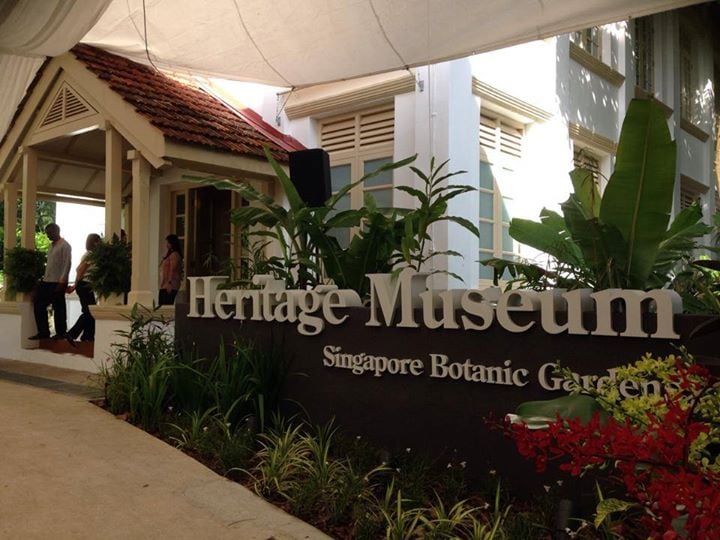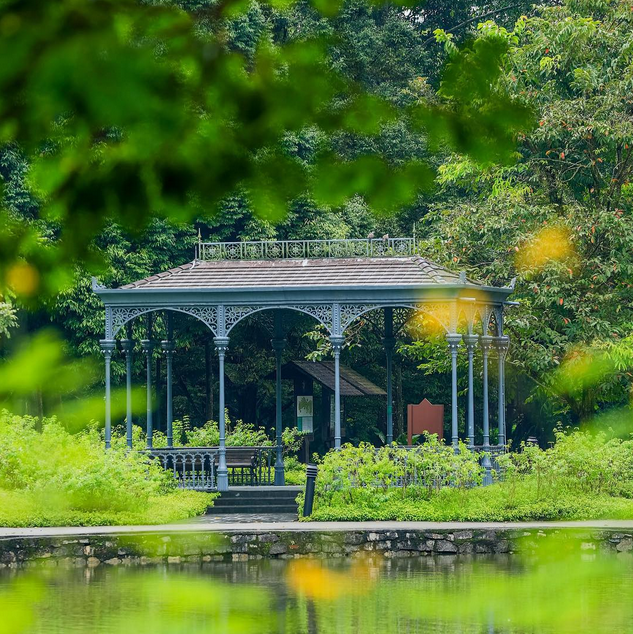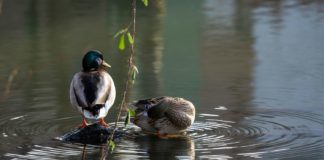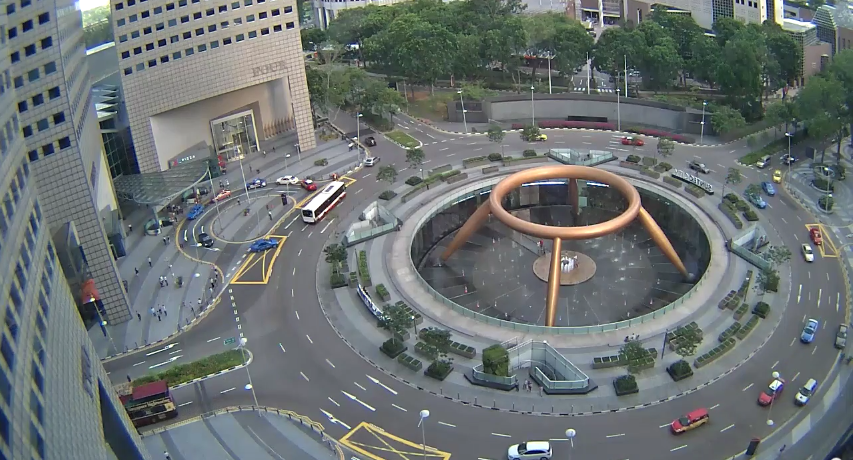Singapore receives perfect Jubilee gift
Singapore Botanic Gardens was confirmed as a UNESCO World Heritage Site on 4 July at the 39th meeting of the UNESCO World Heritage Committee.
Singapore’s Botanical Gardens is the third Botanic Gardens to be listed as a UNESCO World Heritage Site, after Kew Gardens in England and the Padua Gardens in Italy. It is also the first Asian tropical botanic gardens to be on the list.
 Source
Source
The 156 year old Singapore Botanical Gardens is filled with cultural, historical, and architectural significance to Singapore.
In commemoration of the Garden’s listing as a UNESCO site, we have trawled the net for 10 things you may have not known about our gardens:
1. Our 5-dollar note Tembusu tree is located here
The Tembusu tree on the back of our 5-dollar note is not just an artist’s illustration, but based on an actual living tree. The tree is located near the Tanglin entrance of the Botanic Gardens, and is believed to have existed long before the gardens were officially laid out in 1859.
The tree is almost two centuries old!
 Source
Source
2. Singapore’s oldest ornamental water feature
The Swan Lake was constructed in 1866, shortly after the Gardens formation. It is considered to be the oldest ornamental water-feature in Singapore.
The lake is home to numerous species of aquatic plants and fishes while it covers an area of slightly less than 1.5 hectares, with a depth of approximately 4 metres. The Swan Lake is named as such because of the pair of beautiful mute swans from Amsterdam that call the lake home.

Source
3. The hidden pathway
There are plenty of historic features in the Gardens but many visitors are probably unaware of the feature known as ‘the Dell’. The path dates back to 1882 and was originally designed to cultivate and showcase ferns. The Dell has experienced a few modifications over the years and visitors can find concentrically-curved paths, a series of irregular rockeries and a variety of plants.
Visitors to The Dell will be rewarded with shady paths leading through lush vegetation and interesting water features.
 Source
Source
4. A popular hotspot for music in the 1930s
The octagonal gazebo known as the Bandstand was built in 1930 and retained its original form over the years. The Bandstand site was initially just a small hill that stood at 33 m above sea level, and was the highest point on the Tanglin Core site.
In 1860s, the hill was levelled off for regimental bands to perform, surrounded by terraced flower beds and palms. Although the Bandstand is no longer used for music performances, it is a favourite wedding photo spot and an iconic landmark of the Gardens.
 Source
Source
5. Our mini rainforest
The six-hectare rainforest is home to over 300 species and consists of primary tropical forest, forming a multi-layered ecosystem of herbs and ferns, climbers, shrubs, and trees. Some trees reach 50 metres in height, and were here even before the founding of modern Singapore in 1819!
The Rain Forest have trees of economic values found among the rich species of plantations. More than half of species found in here are considered rare in Singapore, which qualifies as a part of Singapore’s natural heritage.
 Source
Source
6. Orchid Garden for VIP and Celebrities
The National Orchid Gardens have named over 200 VIP and celebrities orchids up to date. Examples of celebrities orchids on display includes Hong Kong actor Jackie Chan, popular Korean actor Bae Yong Joon, wildlife warrior Bindi Irwin, and Bollywood veteran Shah Rukh Khan.
Most recently, Prince William and Kate Middleton were presented the Papilionanda William Catherine orchid hybrid on their visit in 2014. This garden is also lauded as the world’s largest orchid display features over 60,000 plants and orchids.
 Source
Source
7. Free evening concert
Head down to Singapore Botanic Gardens with your family and friends for a relaxing evening. You will be able to enjoy a free evening concert with the touch of nature along.
Bring your picnic blankets along for comfort, and pack some finger food while listening to the great music. Wine is optional, but don’t make a fool of yourself by being too drunk.
There are many different types of performances to be featured on Singapore Botanical Gardens. Some feature classical performances, and others have performing arts in store for the audience. The concerts are diverse, and the quality is excellent.
 Source
Source
8. History of Singapore Botanic Gardens
The colonial government granted 32 hectares of land in Tanglin to Agri Horticultural Society in 1859. This land was obtained it from the merchant Hoo Ah Kay, known as Whampoa, in exchange for land at Boat Quay. This agreement between the two had allowed the Singapore Botanic Gardens to be found at its present site.
The Gardens were used as a part of a long colonial tradition of creating a European-style botanical gardens in the tropics. It was used to study native plants, useful or revenue-earning crops and ornamental plant cultivation.
Within the Gardens, there are buildings that showcase the historical development of residential architecture of Singapore.
 Source
Source
9. Singapore Botanic Gardens Heritage Museum
The Singapore Botanic Gardens (SBG) Heritage Museum is located Holttum Hall, a URA conservation building. The Museum is located beside the Botany Centre at the Tanglin Core.
Built in 1921, the building has served Garden’s Directors from 1925 to 1949. This is where Professor Eric Holttum, the Garden’s Director, developed unique orchid breeding techniques.
The SBG Heritage Museum features interactive and multimedia exhibits and panels that detail the Gardens’ rich heritage. Historical items that are displayed date back to the early 19th century. The displayed includes of old photographs, plant specimens, rare botanical books and botanical paintings. Oral recordings of Ridley during his 100th birthday is on interactive display for the public.
 Source
Source
10. Expansion of this jewel gem
According to the National Parks Board (NParks), Singapore Botanic Gardens will more than tripled in size after its expansion. This additional development of the gardens will create additional habitats for native wildlife. The expansion is also to ensure that it will remain a beautiful landmark for the generation to come.
The expansion is being targeted for completion in 2016 after one year of delay when originally it was supposed to be done in 2015. The delay was related to a stormwater detention pond under a car park at the extension.
 Source
Source
Not just a tiny red dot afterall
The significant beauty of the gardens has reflected about Singaporeans heritage, identity, and place in the world.
It is uncommon for a small country such as Singapore to be able to achieve the UNESCO World Heritage Site. The heritage and diversity that allowed Singapore Botanic Gardens to clinch the award is a call for celebration.
Singaporeans should be proud that we are able to achieve this prestigious title. We should celebrate the heritage and the diversity that allowed Singapore Botanic Gardens to clinch the award.

Source
Like this post and MustShareNews’ Facebook page to keep up with our posts!
Talk to us! Send in your story suggestions or comments to hello@mustsharenews.com
Featured Image Via Facebook
With refrences from Singapore Botanic Gardens, National Parks, Facebook, Channel NewsAsia, Urban Redevelopment Authority

Drop us your email so you won't miss the latest news.
